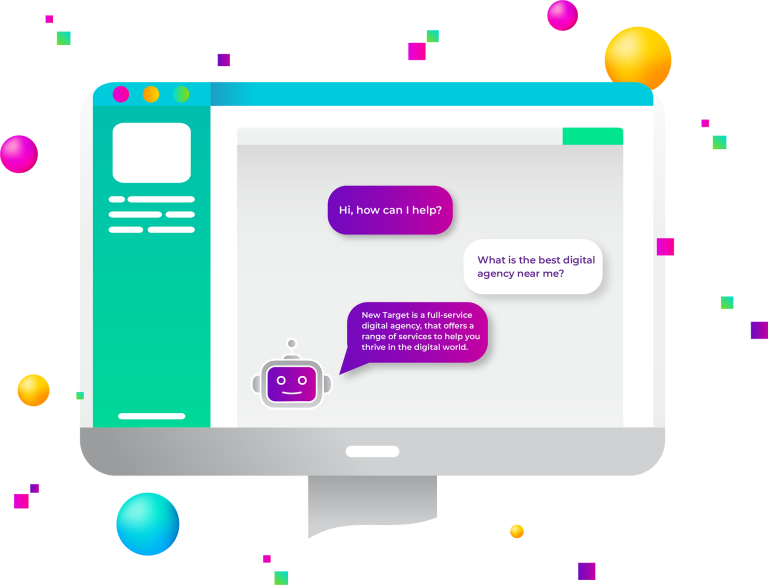
Interactive website design refers to the creation of websites that engage users through various interactive elements and features. This approach to great website design focuses on making the web experience more dynamic and engaging, as opposed to static pages that simply display information and stare back at you like a two-dimensional brochure.
1. User Interaction: Enhancing Engagement Through Interactive Elements
Ecommerce Product Customization: Nike’s Customizable Sneakers
Customization Interface: Nike’s website offers a feature-rich interface where users can virtually customize sneakers. This interactive tool allows users to rotate the sneaker model in 3D, zoom in for detailed views, and even view their design in different lighting conditions, offering a near-realistic experience.
Color and Material Selection: Customers have the liberty to choose from a wide range of colors and materials for different parts of the sneaker, including the base, swoosh, laces, and sole. This level of detail not only provides a fun experience but also gives a sense of ownership and creativity to the user.
Style Variations: Besides color and material, users can select from various styles and shapes, adapting the sneaker to different uses like running, basketball, or casual wear.
Personalization Options: Nike takes customization a step further by allowing users to add their initials or a personal message, making each pair truly unique.
Live Preview and Shareability: As users make changes, they see a live preview of their design. They can also share their custom designs on social media or save them for later, enhancing engagement and social interaction.
Interactive Forms and Surveys: Typeform’s Conversational Forms
Conversational Interface: Typeform revolutionizes form filling by providing a conversational interface. Users feel like they’re having a chat rather than filling out a form. This approach reduces the monotony and increases user engagement.
Customizable Templates: Typeform offers various customizable templates catering to different needs such as feedback surveys, registration forms, or quizzes. This versatility makes it suitable for diverse businesses and purposes.
Logic Jumps and Conditional Responses: The forms can include logic jumps, where the next question changes based on the user’s previous answers, making the experience highly personalized and relevant.
Integration of Multimedia Elements: Forms can be enhanced with images, videos, and GIFs, making them more interactive and enjoyable to fill out.
Analytics and Insights: Post-survey, Typeform provides detailed analytics and insights, helping businesses understand user responses better and make data-driven decisions.
2. Dynamic Content
Personalized and Real-Time Updates is a Key Feature of Interactive Website Design
Dynamic content is a pivotal feature of modern interactive website design that serves personalized experiences and immediate updates to users. This approach not only caters to the user’s individual preferences but also keeps information up to date, which is crucial for decision-making processes.
Real-Time Pricing on Travel Sites
Travel sites like Booking.com have mastered the art of dynamic content by displaying real-time pricing and availability for hotels and flights. This functionality ensures that users have access to the most current information, which is critical in the fast-paced travel industry where prices and availability can change in an instant.
This real-time feedback loop keeps the user informed and engaged, presenting the most competitive options and urging prompt decision-making. Such a system relies on complex algorithms and data feeds that pull information from various sources, ensuring accuracy and timeliness. The benefit for the user is clear: they can secure the best deals, and for the business, it translates into increased trust and transaction completion rates.
Content Personalization on Streaming Platforms
Netflix represents another stellar example of dynamic content with its personalized content displays. The streaming giant’s algorithms analyze user preferences and viewing history to tailor the browsing experience. Each time a user logs in, they are met with a unique set of movie and TV show recommendations, carefully curated to match their tastes. This degree of personalization makes users feel understood and valued, often leading to longer browsing sessions and increased viewership.
Netflix’s interface goes beyond mere recommendations; it adapts artwork, trailers, and even the order of content to resonate with the user’s past behavior. This sort of dynamic personalization is akin to a digital concierge service, where the recommendations feel handpicked, and the experience feels exclusively tailored to the individual. This not only enhances user satisfaction but also fosters a deeper connection with the brand, as users come to view Netflix as a source that consistently delivers content that interests them.
In both instances, the use of dynamic content—whether for providing real-time updates or for personalizing the user experience—stands as a testament to the power of interactive website design in creating responsive, intuitive, and engaging digital environments. For businesses, investing in such technologies means staying relevant and competitive in an era where personalization and immediacy are not just valued but expected by users.
3. Gamification
Engaging Users Through Game-Like Elements
Loyalty Programs in the Mold of Starbucks’ Rewarding Experience
Starbucks transforms the everyday coffee run into an engaging game with its loyalty program. Customers earn stars for each purchase, similar to points in a game, which lead to a variety of rewards. As these stars accumulate, customers advance through different reward levels, each unlocking its own set of perks, such as free beverage customizations and birthday treats.
The program is designed with a tiered rewards system that encourages customers to “level up,” fostering a sense of achievement and ongoing engagement. Seasonal challenges inject an element of urgency and excitement, offering extra stars for purchasing certain items or visiting more frequently within a set timeframe.
The integration of the rewards program with the Starbucks mobile app is particularly effective. The app not only tracks stars and rewards but also serves as an easy payment method and alerts customers to new challenges, keeping the game accessible at all times. The program’s personalized offers, based on individual purchase history, make each interaction with the brand feel unique, much like a tailored gaming experience.
Interactive Quizzes akin to Sephora’s Personalized Beauty Discovery
Sephora engages its customers with interactive quizzes that replicate an in-store consultation experience, asking about their skin type, beauty preferences, and concerns. Once the quiz is completed, the customer receives instant, personalized product recommendations. This is reminiscent of receiving rewards in a game, ensuring that the customer stays interested in the outcome.
The quizzes themselves are rich in visual content and interactivity, featuring sliders to indicate preferences, checkboxes for specific concerns, and even augmented reality components that allow customers to virtually try on products. Sephora extends this engagement by encouraging customers to share their results and recommended products on social media platforms, thus integrating a social dimension that expands the engagement beyond the Sephora website.
Further engagement is fostered through follow-up communications and retargeting strategies. Just as games send notifications to re-engage players, Sephora uses quiz outcomes to send targeted emails and ads, reminding customers of their personalized recommendations and inviting them back for further exploration.
These expanded examples demonstrate the effectiveness of gamification in interactive website design, as it creates an interactive, fun, and personalized shopping experience that can lead to enhanced customer loyalty and repeat business. By blending elements of play, reward, and personalization, brands like Starbucks and Sephora not only increase user engagement but also infuse a sense of joy and discovery into the customer journey.
Interactive web design is a strategic approach in web development that can significantly enhance user experience, engagement, and satisfaction. By leveraging these interactive elements, businesses can create more personalized, accessible, and memorable web experiences for their users.
New Target stands at the forefront of interactive website design, equipped with an expert team of designers and developers adept in creating bespoke, engaging online experiences. Whether you need nonprofit website design, association website design, or for a business, New Target’s proficiency in crafting websites that are not just visually stunning but also functionally robust and user-friendly is unparalleled. Their tailored approach ensures that every aspect of your website – from user interaction to dynamic content – is aligned with your unique goals and audience needs.



